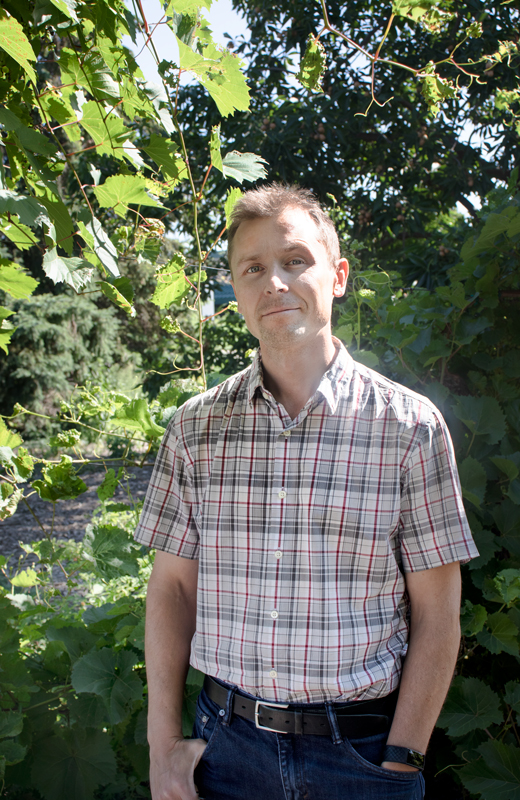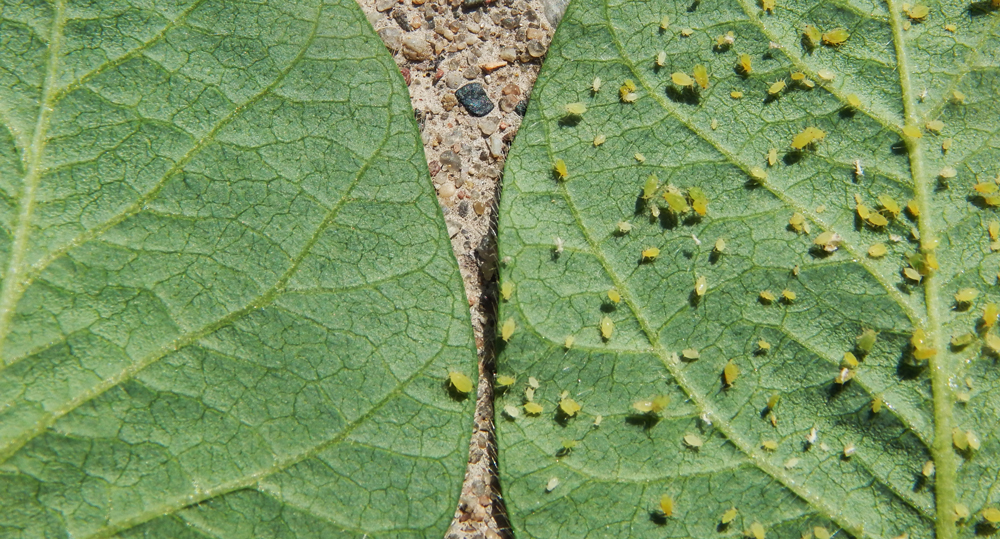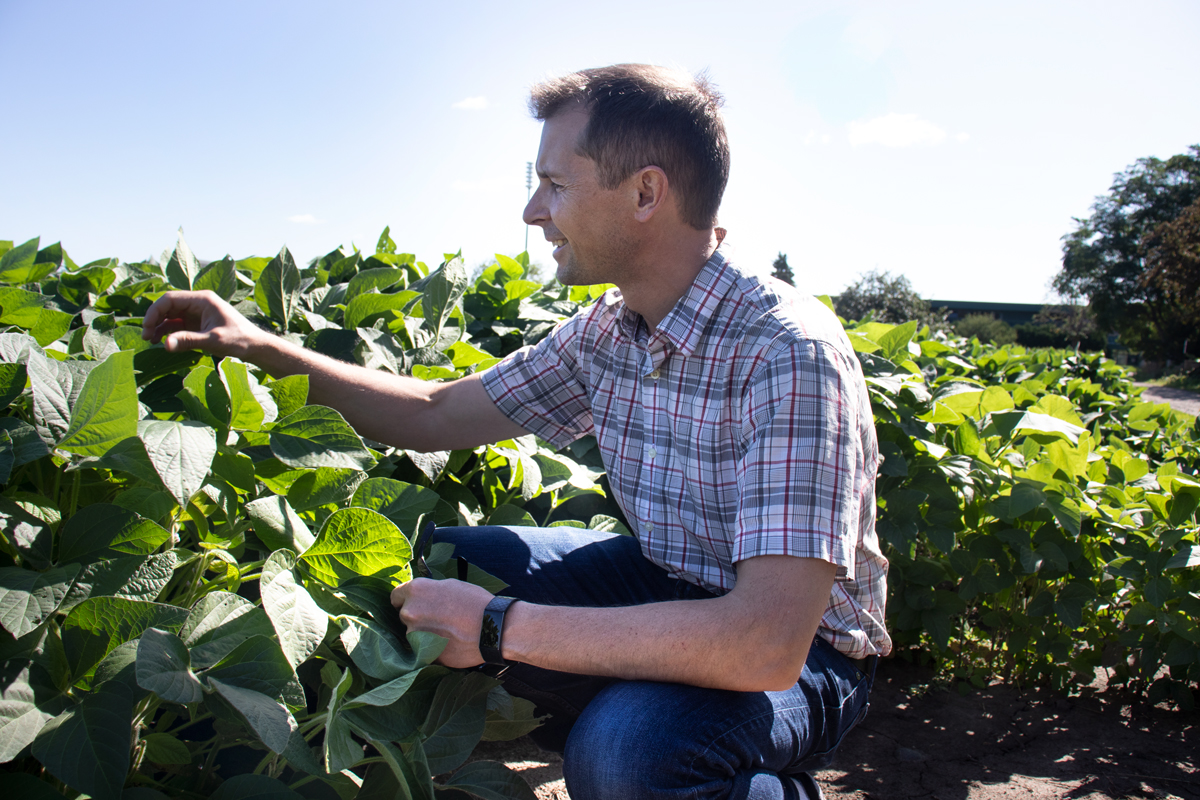August 1, 2019
Minnesota soybean growers have been searching for solutions to combat the massively destructive soybean aphid and reduce insecticide use ever since the aphid was introduced to North America in the early 2000s. Aaron Lorenz, associate professor in the Department of Agronomy and Plant Genetics, is developing a solution to aphids that he hopes will drastically reduce the need for insecticide application in Minnesota as part of a research team led by Extension entomologist Robert Koch.
“I don’t know any farmers that want to spray insecticides,” said Lorenz.
Soybean varieties containing aphid resistant genes have been scarce in the Midwest, but are almost nonexistent here in the “Bold North.” Lorenz’s research focuses on the development of early-maturing, aphid-resistant lines that can withstand the northern climate of Minnesota.

Aaron Lorenz, associate professor in the Department of Agronomy and Plant Genetics (Credit: Caro Silvola, MITPPC)
Research roots
The earliest roots of this work trace all the way back to the 1890’s, with the start of a collection of soybean germplasm now known as the USDA Soybean Germplasm Collection.
“The collection became an important reservoir of genetic diversity that we can search through for resistance to new pests,” said Lorenz.
Researchers have been adding to it throughout the years. Some of the biggest and most valuable additions were added in the 1920s and 1930s by early soybean geneticists. These geneticists went on expeditions to East Asia where the soybean originated and collected different varieties grown by farmers there.
When the soybean aphid (Aphis glycines) first invaded North America, soybean breeders were able to screen thousands of existing soybean varieties held in the USDA Collection in search of any that had some level of resistance to the aphid. When a new pest or disease is introduced to the US, the Soybean Germplasm Collection is one of the first places researchers go in search of resistant varieties.
“The collection became an important reservoir of genetic diversity that we can search through for resistance to new pests.”
About the Author
Maggie Nesbit is a Communications Intern with the Minnesota Invasive Terrestrial Plants and Pests Center (MITPPC). She is a double major in English and Strategic Communications at the University of Minnesota. In her spare time, Maggie enjoys running, hiking, reading and spending time with friends and family. Maggie's position is funded by a grant from the Minnesota Soybean Research & Promotion Council.

